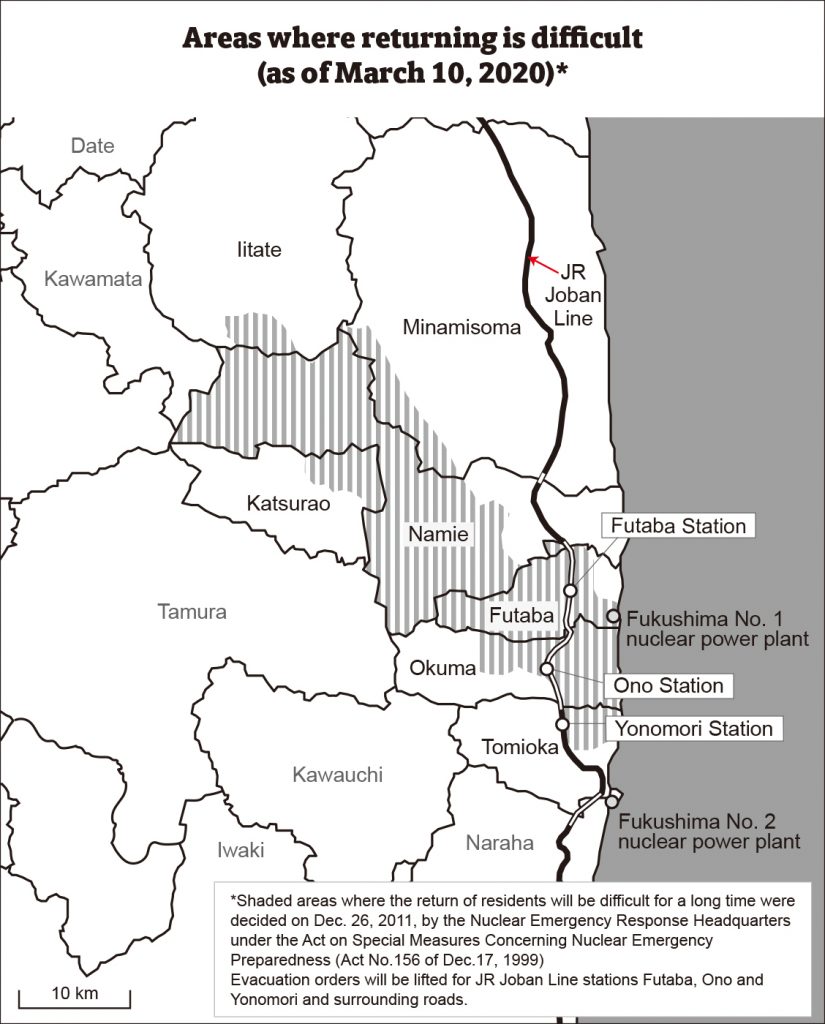Advisory lifted in phases
The estimated annual cumulative radiation dose, based on measurements taken 1 meter above ground in areas within 80 kilometers of the nuclear plant, has fallen by 78% in the past eight years. Still, seven cities and towns, including Futaba, Namie and Okuma, still have areas where entry is restricted.
Under the 2011 evacuation advisory, these areas were designated as:
1) “areas where returning is difficult” where the annual radiation dose may not fall below 20 millisieverts five years after the accident, 2) “habitation-restricted areas” where the annual dose may exceed 20 millisieverts, and 3) “preparation areas for lifting of evacuation orders” where recovery and reconstruction work to enable residents’ return is allowed. These designations began to be lifted in phases in April 2014.
In April 2019, the evacuation advisory was lifted for parts of Okuma, excluding areas where returning is difficult. It was the first such measure taken by one of the plant’s host towns.
In March 2020, the evacuation advisory was also lifted for parts collectively representing about 4% of the area of Futaba, the other host town. In Futaba, a district measuring about 555 hectares centered around Futaba Station on the JR Joban Line was designated as a specified reconstruction and revitalization base. Work to prepare the district for the lifting of the evacuation advisory in spring 2022, is underway.

Full restart of fishing
While work to recover jobs and liveliness is progressing steadily, there are still issues in the farming and fishing industries. There is still a gap between the prices of Fukushima’s agricultural and fisheries produce and the national average, although it has been narrowing in recent years. Of the 54 countries and territories that introduced import restrictions on Fukushima produce since 3/11, 15 still had the restrictions in place as of Jan. 29.
Even under such circumstances, a beacon of hope has emerged from the full-fledged restart of coastal fishing activities. Until now, fishermen along the coast had been forced to impose fishing restrictions on themselves. They started trial operations with restrictions on fishing days and areas, gauging target markets’ receptiveness to their products and expanding the scope in phases.
In March 2020, all types of fish came under the scope of the operation. The 2019 haul in the sea off Fukushima was about 3,640 tons, which is still just 14% of the level before 3/11. The start of full-fledged fishing operations, however, has rekindled the hopes of local fishermen.


